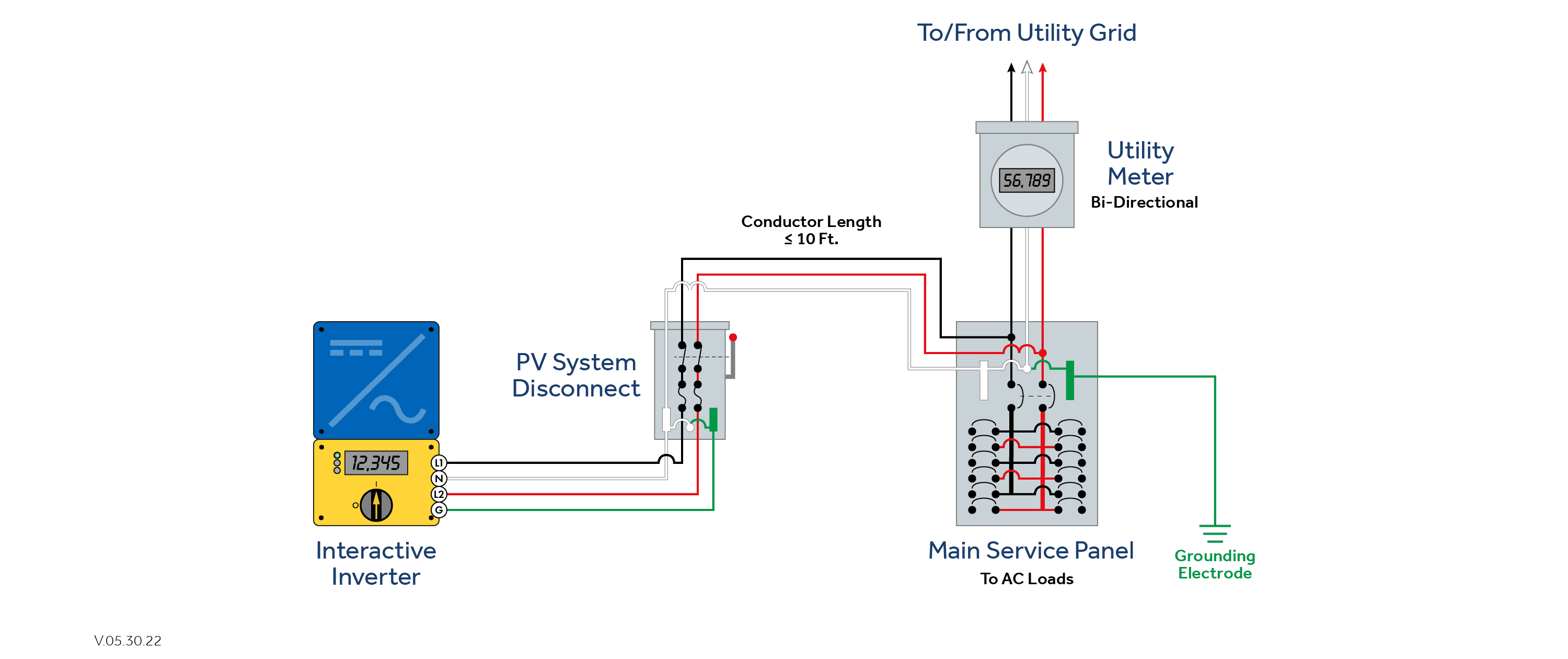
Technical Article
Code Corner: 2023 NEC 705.11 (D) and (F) Source Connections Conductor Length
When determining a safe and compliant location for overcurrent protection devices (OCPDs) in supply-side connections, the National Electrical Code has made some important clarifications from the 2020 to 2023 edition. Ryan Mayfield covers this code evolution in our latest episode of Code Corner.
NEC 2020 705.11(C) explicitly capped the length of a conductor from the point of connection to the service. Take, for example, a residential PV system with readily accessible disconnecting means. The 2020 version of 705.11 (C) stipulates maximum lengths for the power source output circuit conductors between the system disconnect and source connection:
(C) Overcurrent Protection.
The power source output circuit conductors shall be protected from overcurrent in accordance with 705.30. If fuses are not integral with the disconnecting means, the disconnecting means shall be located on the service side of the fuses. Where the power source output circuit conductors make their connection to the service outside of a building, they shall be protected by overcurrent devices in a readily accessible location outside the building or at the first readily accessible location where the power source conductors enter the building. Where the power source output circuit conductors make their connection to the service inside a building, they shall be protected with one of the following methods:
- With an overcurrent device located within 3 m (10 ft) of conductor length in dwelling units and 5 m (16.5 ft) in other than dwelling units from the point of connection to the service
- In other than a dwelling unit, with an overcurrent device located within 20 m (71 ft)of conductor length from the point of connection to the service, provided that cable limiters installed in all ungrounded conductors are located within 5 m (16.5 ft) of conductor length from the point of connection to the service.

In 2023, we were given more leeway for OCPD location and the length of the conductor between the OCPD and the service connection. The path to uncover this information is a bit of a journey — watch the video below for a full explanation. In short, there is no longer a specific “maximum length” for these conductors per the 2023 NEC.
If the 2023 NEC is adopted in your area, we encourage you to share these Code updates with your AHJ to increase your design flexibility moving forward.
If you have further questions and considerations on this, or any code topic, our System Design & Engineering team is happy to help. Contact us to start a project or learn more. You can also find more of our Code Corner videos on the Mayfield Renewables YouTube channel.



